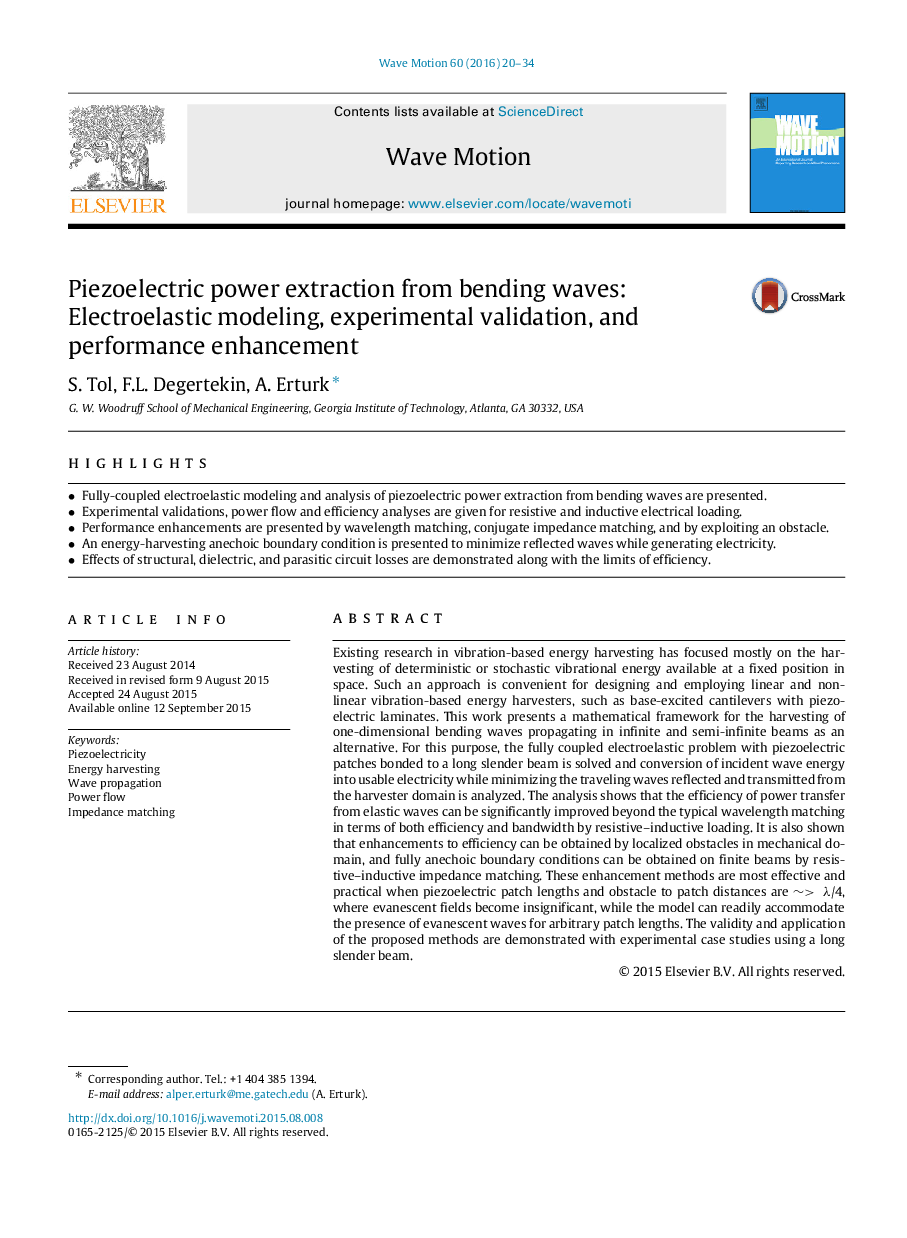| کد مقاله | کد نشریه | سال انتشار | مقاله انگلیسی | نسخه تمام متن |
|---|---|---|---|---|
| 1900068 | 1534271 | 2016 | 15 صفحه PDF | دانلود رایگان |
• Fully-coupled electroelastic modeling and analysis of piezoelectric power extraction from bending waves are presented.
• Experimental validations, power flow and efficiency analyses are given for resistive and inductive electrical loading.
• Performance enhancements are presented by wavelength matching, conjugate impedance matching, and by exploiting an obstacle.
• An energy-harvesting anechoic boundary condition is presented to minimize reflected waves while generating electricity.
• Effects of structural, dielectric, and parasitic circuit losses are demonstrated along with the limits of efficiency.
Existing research in vibration-based energy harvesting has focused mostly on the harvesting of deterministic or stochastic vibrational energy available at a fixed position in space. Such an approach is convenient for designing and employing linear and nonlinear vibration-based energy harvesters, such as base-excited cantilevers with piezoelectric laminates. This work presents a mathematical framework for the harvesting of one-dimensional bending waves propagating in infinite and semi-infinite beams as an alternative. For this purpose, the fully coupled electroelastic problem with piezoelectric patches bonded to a long slender beam is solved and conversion of incident wave energy into usable electricity while minimizing the traveling waves reflected and transmitted from the harvester domain is analyzed. The analysis shows that the efficiency of power transfer from elastic waves can be significantly improved beyond the typical wavelength matching in terms of both efficiency and bandwidth by resistive–inductive loading. It is also shown that enhancements to efficiency can be obtained by localized obstacles in mechanical domain, and fully anechoic boundary conditions can be obtained on finite beams by resistive–inductive impedance matching. These enhancement methods are most effective and practical when piezoelectric patch lengths and obstacle to patch distances are ∼>λ∼>λ/4, where evanescent fields become insignificant, while the model can readily accommodate the presence of evanescent waves for arbitrary patch lengths. The validity and application of the proposed methods are demonstrated with experimental case studies using a long slender beam.
Journal: Wave Motion - Volume 60, January 2016, Pages 20–34
